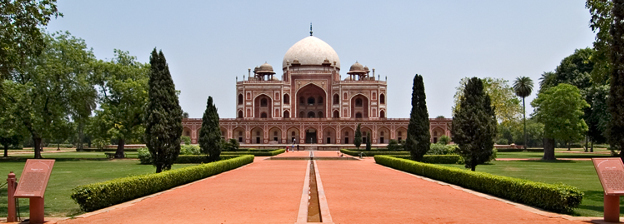

The nature of the soil and climate make agriculture a simple art. A light plough, which he daily carries on his shoulder to the field, is sufficient, with the help of two small oxen, to enable the husbandman to make a shallow furrow in the surface, in which to deposit the grain. Sowing is often performed by a sort of drill (it is scarcely entitled to the addition of plough), which sheds the seed through five or six hollow canes; and a board, on which a man stands, serves for a harrow. A hoe, a mattock, and a few other articles, complete the implements of husbandry. Reaping is performed with the sickle: the grain is trodden out by cattle, brought home in carts, and kept in large dry pits under ground. The fields, though the bounds of each are carefully marked, are generally uninclosed; and nothing interrupts their continuity, except occasional varieties in the crops.
But although the Indian agriculture has such a character of simplicity, there are some peculiarities in it which call forth certain sorts of skill and industry not required elsewhere, and there are some descriptions of cultivation to which the former character does not at all apply.
The summer harvest is sufficiently watered by the rains, but a great part of the winter crop requires artificial irrigation. This is afforded by rivers, brooks, and ponds; but chiefly by wells. In the best parts of the country there is a well in every field, from which water is conveyed in channels, and received in little beds, divided by low ridges of earth. It is raised by oxen in a large bucket, or rather bag, of pliant leather, which has often an ingenious contrivance, by which it empties itself when drawn up.
In some soils it is necessary, every three or four years, to eradicate the weeds by deep ploughing, which is done with a heavy plough, drawn by buffaloes, at a season when the ground is saturated with moisture. Manure is little used for general cultivation, but it is required in quantities for sugar cane, and many other sorts of produce. Many sorts also require to be carefully fenced; and are sometimes surrounded by mud walls, but usually by high and impenetrable hedges of cactus, euphorbium, aloe, and other strong prickly plants, as well as by other thorny bushes and creepers.
One great labour is to scare away the flocks of birds, which devour a great part of the harvest in spite of all precautions. Scarecrows have some effect, but the chief dependence is on a man, who stands on a high wooden stage overlooking the field, shouting, and throwing stones from a sling, which is so contrived as to make a loud crack at every discharge.
The Indians understand rotation of crops, though their almost inexhaustible soil renders it often unnecessary. They class the soils with great minuteness, and are well informed about the produce for which each is best, and the mode of cultivation which it requires. They have the injudicious practice of mixing different kinds of grain in one field, sometimes to come up together, and sometimes in succession.
Some of the facts mentioned affect armies and travellers. At particular seasons, the whole face of the country is as open and passable as the road, except near villages and streams, where the high inclosures form narrow lanes, and are great obstructions to bodies of passengers. Large watercourses, or ducts, by which water is drawn from rivers or ponds, also form serious obstacles.
These remarks are always liable to exceptions from varieties in different parts of India; and in the rice countries, as Bengal and the coast of Coromandel, they are almost inapplicable. There, the rice must be completely flooded, often requires to be transplanted at a certain stage, and is a particularly laborious and disagreeable sort of cultivation.
This collection transcribed by Chris Gage![]()
